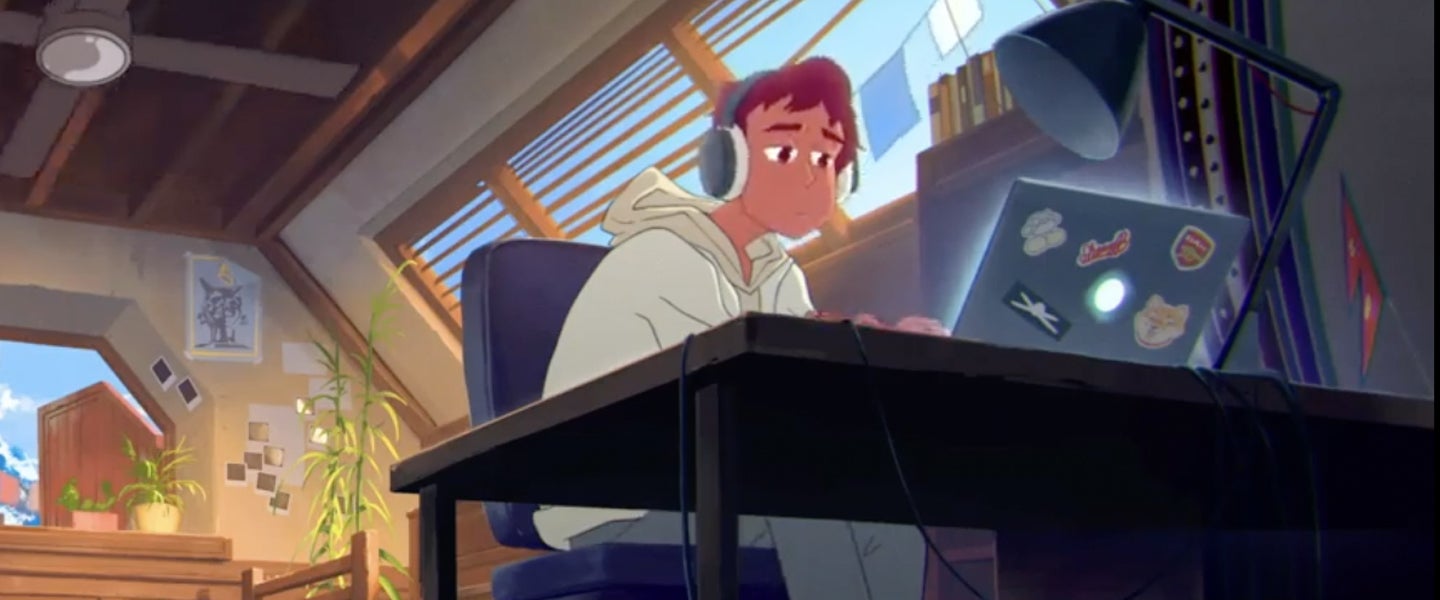Lo-fi YouTube streams have long acted as virtual havens for fidgety teens and easily distracted office workers, supplying a continuous surge of soothing, ambient, downtempo and ordinarily lyricless tunes, ideal for studying or straight vibing. But when world leaders demanded that everyone shelter in place to help curb the spreading coronavirus, many of these streams found a new niche: They shifted their brands from beats for studying and relaxation to beats for quarantining and staying indoors. Even Will Smith, who never before uploaded anything of the sort, just recently released a “Chill Beats to Quarantine To” stream on his wildly popular YouTube channel.
“As the COVID-19 pandemic became more and more serious, more people were turning to digital platforms than ever before,” explains Luke Pritchard, 22, co-founder of College Music, a YouTube channel devoted to sharing “new music from unheard artists,” which includes streaming lo-fi beats. “We’d recently worked with an artist called sagun and his creative team to create a new visual for a livestream. This visual had the perfect feel to it and conveyed the staying inside message we wanted to get across.”
Most lo-fi streams on YouTube feature an animated image, which usually mirrors what many people are accomplishing (or hoping to accomplish) to these streams — the College Music animation that Pritchard is referring to features a young man in his bedroom, listening to music and typing on his laptop. He occasionally chomps on a slice of pepperoni pizza and rolls a soccer ball around under one foot. Listening to the beats and watching the screen, it almost feels like having a digital study, or quarantine, partner right there with you.
“We’re big advocates of, where possible, using our platform as a force for good,” says Jonny Laxton, 21, the other co-founder of College Music. “This was an opportunity for us to help the global effort to reduce the spread of COVID-19, so I guess we just see it as doing our bit. We appeal to a younger audience, averaging around the 18-to-24 age bracket, so we hope to have created a way for younger people to be a little more receptive to the World Health Organization advice. We’ve previously used our livestreams to convey an important, if somewhat difficult message regarding mental health, so this isn’t the first time we’ve tried to use our streams as a force for good.”
Besides just designating their stream as “beats to quarantine and stay indoors to,” hopefully encouraging listeners to do just that, their animations also flash an occasional message of public health advice. “We have an animation to tell people to wash their hands for at least 20 seconds, and another that says to cough into your elbow if you don’t have a tissue handy,” explains Pritchard. “These are on five-minute loops, typically lasting around 15 to 20 seconds, with no spoken words on them. We think the frequency and variety of each animation helps subtly remind people of the situation without it coming across as too in-your-face or spammy. We appreciate that hearing the same message again and again can end up causing people to stop listening, so by conveying this message in a space where people are actively engaged, we feel we have the best chance to get it across.”

While many people use these streams to study and concentrate, when Pritchard says “actively engaged,” he means that people are talking in the public chat rooms frequently embedded beside such streams. “We’ve seen a lot of messages in the live chat from people saying that it’s helped them focus and whatnot,” Pritchard adds. “We’ve also seen people comment on the animations, and that they’re helpful reminders for them.”

Their audience is indeed quite substantial, especially now that everyone is sequestered indoors. “Since launch, the stream has had just under 700,000 views, with the average user watching for 40 minutes, which is around double the channel’s average retention,” Pritchard says. “The stream currently stands at 17,000 likes to 152 dislikes, so the mass of people has been receptive to it.” And supposedly, receptive to the stay home messages, too.
Which makes sense, considering the soothing, but productive feelings that lo-fi beats can provoke and the struggles that many of us are experiencing in quarantine. “Lo-fi beats, to a large extent, provide a relatively distraction-free listening experience, which is definitely a factor as to why it lends itself so well as an accompaniment to studying,” says Laxton. “Though, at the same time, people are increasingly turning to lo-fi hip-hop beyond studying, too, as it can provide a smooth background for a variety of situations, where the listener wants some music to suit a more passive listening situation. During this period of mass isolation, an increasing number of people are turning to these radios as they begin to get to grips with working from home, and at the same time, there’s a large group that also tune into the streams while relaxing and chilling out.”
I, for one, can vouch for the concentration-activating effects of these streams — I love all kinds of music, ranging from death metal to acoustic lullabies, but I spend my workdays, every single one of them, typing violently to the reassuring sounds of unfamiliar lo-fi beats. As far as science is concerned, much of the music in these streams checks all of the boxes when it comes to encouraging focus: No vocals, no strong melodies, a reliable pulse, maybe some spaciness.
And if everyone like me, who regularly tunes into lo-fi streams for work or relaxation, is persuaded by their favorite channel to stay inside instead of going to park or to wash their hands for a few extra seconds, lo-fi beats could end up saving us all a lot more than a few minutes of being distracted from our work or studies.

